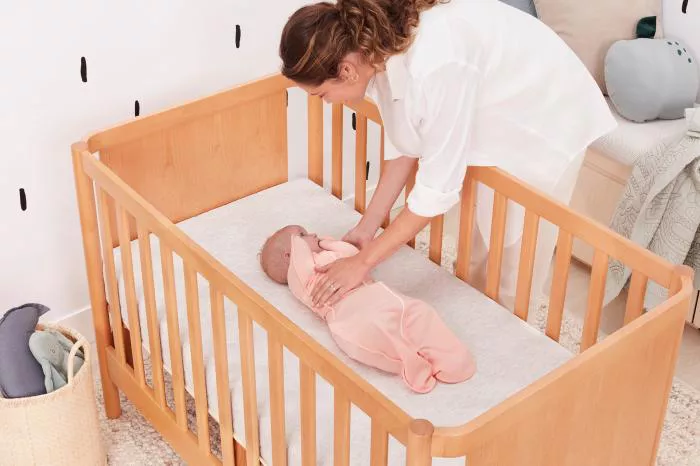Choosing the right sleepwear for a newborn can be challenging. New parents often worry about their baby’s comfort and safety during sleep. Understanding how much a newborn should wear to sleep is essential to ensure the baby stays warm without overheating.
In this article, we will explore the key factors to consider when dressing a newborn for sleep. These include room temperature, layering, fabric choices, and safe sleep practices.
The Importance of Regulating Temperature
Newborns cannot regulate their body temperature as effectively as older children. Their small bodies lose heat quickly, making them more vulnerable to cold. However, overheating can also be dangerous, increasing the risk of sudden infant death syndrome (SIDS).
The ideal room temperature for a newborn’s sleep environment is between 68°F and 72°F (20°C to 22°C). Use a thermometer to monitor the room and adjust the baby’s clothing accordingly.
The Basics of Layering
Layering is a practical approach to dressing a newborn for sleep. It allows parents to add or remove layers to maintain the baby’s comfort. A good rule of thumb is to dress the baby in one more layer than an adult would wear to feel comfortable in the same room.
For example, if you are wearing a light shirt, consider dressing your baby in a onesie and a sleep sack or a swaddle. The extra layer provides warmth without restricting the baby’s movement.
Choosing the Right Fabrics
The fabric of the baby’s clothing plays a significant role in ensuring comfort and safety. Opt for breathable and lightweight materials like cotton. Cotton is soft on a newborn’s delicate skin and helps wick away moisture, reducing the risk of overheating.
Avoid heavy fabrics like fleece or wool unless the room is particularly cold. These materials can trap heat, making it harder for the baby to cool down.
Understanding Sleep Sacks and Swaddles
Sleep sacks and swaddles are popular choices for newborn sleepwear. They provide warmth and a sense of security, mimicking the snug environment of the womb.
A swaddle wraps the baby snugly, keeping their arms close to their body. This helps prevent the startle reflex, which can disrupt sleep. However, swaddling should be discontinued once the baby shows signs of rolling over, as it can become a safety hazard.
A sleep sack is a wearable blanket that provides warmth without the risk of loose bedding. Sleep sacks come in various thicknesses, known as TOG ratings, which indicate their warmth level. For room temperatures of 68°F to 72°F, a TOG rating of 1.0 to 2.5 is usually suitable.
Signs Your Baby Is Too Hot or Too Cold
It is essential to monitor your baby for signs of discomfort during sleep. If your baby is too hot, they may have flushed cheeks, damp hair, or sweat on their body. If they are too cold, their hands and feet may feel cool to the touch, or their chest may feel chilly.
Always check the baby’s chest or back to assess their temperature. Hands and feet are not reliable indicators of overall warmth.
Dressing for Different Seasons
Newborn sleepwear should be adjusted according to the seasons.
Winter: In colder months, consider dressing your baby in a long-sleeved onesie, footed pajamas, and a thicker sleep sack. Keep the room heated to maintain a safe temperature.
Summer: During warmer months, a short-sleeved onesie or light cotton pajamas with a lightweight sleep sack may be sufficient. Use a fan to circulate air if the room feels stuffy, but ensure it does not blow directly on the baby.
Transitional Seasons: In spring or fall, use layers that can be easily adjusted. A long-sleeved onesie with a medium-weight sleep sack is often a good choice.
Avoid Over-Bundling
Over-bundling is a common mistake. Adding too many layers can cause overheating, which is a significant risk factor for SIDS. It is better to err on the side of fewer layers if the room temperature is within the recommended range.
Avoid using hats, mittens, or extra blankets for sleep. A baby’s head helps regulate their body temperature, and covering it can lead to overheating.
Safe Sleep Practices
While dressing your newborn for sleep, it is crucial to follow safe sleep practices. The American Academy of Pediatrics (AAP) recommends placing babies on their backs for all sleep times, on a firm mattress with a fitted sheet. Keep the crib free of loose blankets, pillows, and toys.
A properly dressed baby does not need additional blankets. This reduces the risk of suffocation and overheating.
Practical Tips for New Parents
Start Simple: Begin with minimal layers and adjust if your baby seems cold. It is easier to add layers than remove them.
Observe Your Baby: Every baby is different. Pay attention to how your newborn reacts to their sleep environment and adjust as needed.
Have Essentials Ready: Keep a variety of onesies, pajamas, and sleep sacks on hand. This allows you to adapt quickly to changes in temperature.
Invest in Quality: Choose high-quality sleepwear made from breathable materials. These may cost more upfront but can offer greater comfort and durability.
Conclusion
Dressing a newborn for sleep is about finding the right balance. Keep the room at a comfortable temperature, use breathable fabrics, and follow safe sleep guidelines. Layering wisely and avoiding over-bundling will help your baby stay comfortable and safe throughout the night.
By observing your baby and making adjustments as needed, you can ensure they get the rest they need to grow and thrive.
Related topics:


